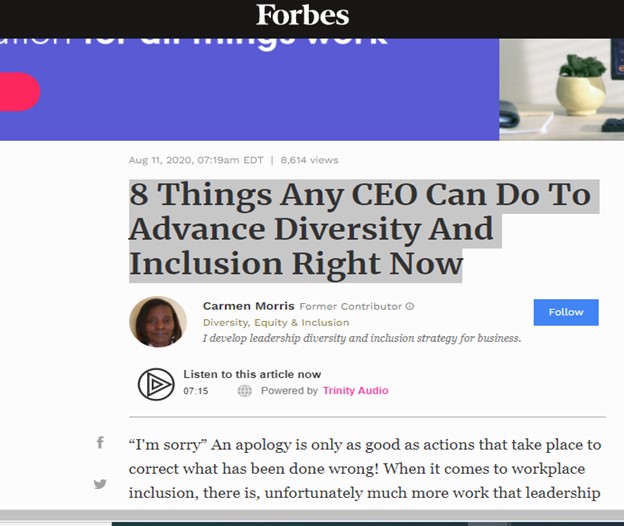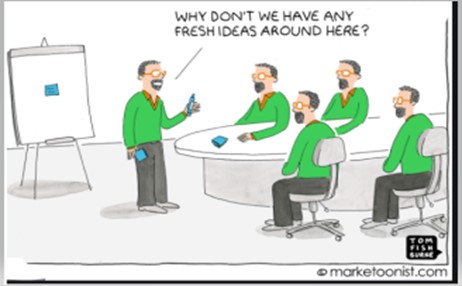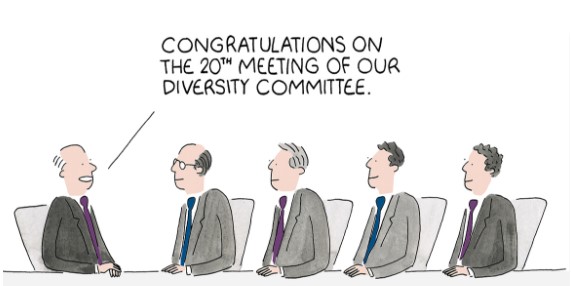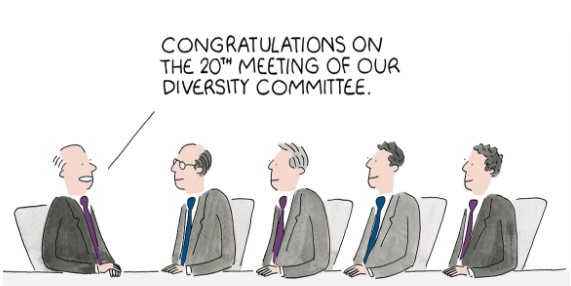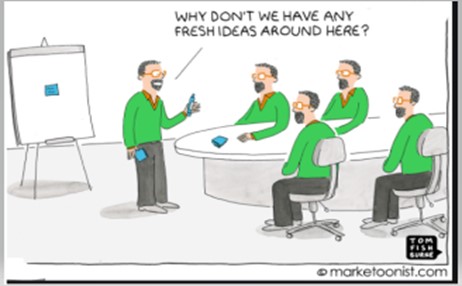1. I enjoyed reading Wong’s perspectives around diversity. The part that struck me were her notions on Equity vs. Equality( page 27). The metaphor of the race with Wong demonstrates the idea that fair is not always equal. Literally the expression that one size does not fit all is utilized by Wong with all runners being given the same size shoe to complete the race. The obvious problem is that all runners don’t wear the same size shoe and in an attempt to be fair to everyone they have disadvantaged some. If my shoe size is smaller or larger than this one size shoe, I am disadvantaged. This metaphor reminded me of a young child’s sense of fair. For example, to young children running a metaphorical race fair (equality) means everyone starts at the same place at the same time. However, when children move to the classroom and have some have a disadvantage the notion of fair and equal treatment becomes an important issue. From our research so far this semester, this “disadvantage” can range from being a student with a disability to an English Language Learner to an LGBTQ individual to a specific gender.
As a student growing up with an IEP, my CSE (Committee for Special Education) meetings always focused on equality. Looking back I have a different lens regarding whether the accommodations produced equality.
But I digress…back to Wong’s metaphorical race, treating students with equality can only be fair if all students are at the starting line and can attain the same access, opportunity and support. Equity is when all “runners” reach the finish line (whatever that might be) of graduation or career choice. Also equity is when these runners have the same opportunities regardless of “disability”.
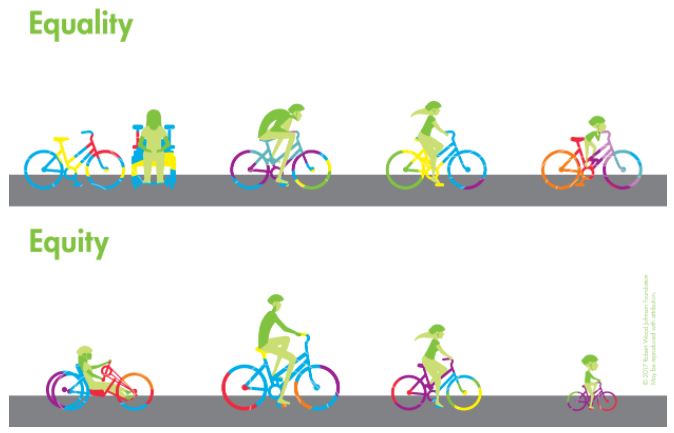
2. Chapter 8 of TSIS, explores the issue of connecting all the parts of writing from transition terms to repeating yourself but with a difference. Wong utilizes both of these connections throughout her writing. Wong starts out in the first paragraph with one of her favorite phrases “in addition” (I prefer additionally) …In addition to a business case. Paragraph two starts out with the contrast transition, regardless (not irregardless – even though Merriam-Webster’s Dictionary has officially really added the word “irregardless” to its dictionary, regardless to the fact it’s not a word…hmmm).
As Wong moves on in the article to the section titled “Context” we see the example of, for example, as a transition in the second paragraph. The “Privilege, Marginalization & Differences in Experience” area demonstrates a paragraph starting out with the contrast transition of – in contrast. These are a few examples of the commonly used transitions that are seen throughout the article.
I appreciate the subtle manner in which Wong repeats information but in a way that is smooth. An example of this would be “Recognizing that certain groups of people have experienced (and continue to experience)”.
Wong uses transitions strategically by making sure that each word and phrase fits the relationship she’s emphasizing or the connection being made. As writers one of our primary goals is to present ideas in both a clear-cut and comprehensible way. Transitional words and phrases create compelling links between ideas and can help readers comprehend the paper’s logic.
I forgot to add what my excitement was for the week…probably because I was busy getting ready for it. I’m going with my family to meet my Aunt and Uncle in Texas on vacation in Mexico…so I’m a bit scattered trying to get everything done finishing my other two classes and packing. Perhaps I’ll have some fun pictures to share in the next few weeks. A vacation is fun but the pre-vacation and post-vacation is a lot of work…and those of you with kids…I take my hat off to you as I try to get just myself ready.

